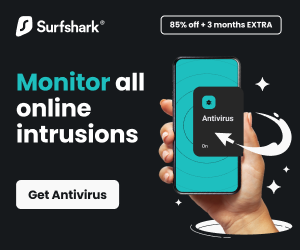Learn how observability solutions transform IT operations in this post.
Modern IT environments are more complex than ever, with microservices, cloud-native applications, and hybrid infrastructures creating layers of dependencies.
In this context, maintaining system performance, ensuring reliability, and minimizing downtime is a significant challenge. Observability solutions have emerged as a powerful approach, helping organizations gain deep insights into their IT operations and make data-driven decisions.
Table of Contents
Understanding Observability vs. Monitoring
While monitoring focuses on predefined metrics and alerts, observability provides a comprehensive understanding of system behavior. Observability software analyze metrics, logs, and traces to uncover patterns, detect anomalies, and predict potential issues.
This holistic approach allows IT teams to understand why systems behave a certain way, rather than simply identifying that something is wrong.
Core Benefits of Implementing Observability Solutions
Organizations adopting observability solutions gain multiple advantages that impact both operational efficiency and business outcomes:
- Faster Root Cause Analysis: By correlating data from multiple sources, teams can quickly identify the origin of issues, reducing mean time to resolution (MTTR).
- Proactive Problem Prevention: Observability enables anomaly detection, allowing organizations to address potential issues before they affect end-users.
- Performance Optimization: Continuous insights into application and infrastructure behavior help identify inefficiencies, optimize resource usage, and improve response times.
- Support for DevOps Practices: Observability integrates seamlessly with DevOps workflows, providing feedback loops for continuous improvement and faster release cycles.
In addition, observability solutions contribute to a culture of data-driven decision-making, empowering IT teams to act on insights rather than reacting to problems.
Observability in Complex IT Environments
With the proliferation of cloud services, containerized applications, and microservices, traditional monitoring tools often fall short. Observability solutions are designed to handle high volumes of distributed data, providing clear visualizations and actionable insights. They help organizations manage complexity by offering:
- End-to-End Visibility: Trace requests across multiple services, identifying bottlenecks and dependencies.
- Real-Time Alerts: Detect deviations in behavior immediately, minimizing potential downtime.
- Data Correlation: Combine logs, metrics, and traces for a unified understanding of system performance.
By implementing these solutions, organizations can maintain high reliability and user satisfaction even in highly dynamic IT environments.
Selecting the Right Observability Solution
Choosing the right observability tool involves evaluating several factors:
- Integration: The solution should support diverse environments and technologies, from cloud platforms to legacy systems.
- Scalability: It must handle growing data volumes as infrastructure and application complexity increases.
- Actionability: Insights should be clear and prioritized, helping teams make informed decisions quickly.
- User Experience: Intuitive dashboards and visualizations ensure teams can adopt and utilize the tool effectively.
The combination of these factors determines how well an observability solution enhances operational efficiency and decision-making.
Conclusion
Observability solutions are a strategic asset for any organization managing complex IT infrastructures. By providing deep visibility, actionable insights, and proactive issue detection, they enable IT teams to maintain system performance, reduce downtime, and optimize resources.
In an era where digital experiences define customer satisfaction, investing in observability is essential for sustaining reliability, improving operational outcomes, and supporting innovation.
INTERESTING POSTS
- How Hybrid Cloud Observability Can Help Keep Your Business Data Secure
- The Real Impact of Cloud-Based Integration Solutions on Businesses Today
- Cybersecurity Technical Writing: Main Points
- Protect Hybrid Environments with Microsoft Entra Suite Solutions
- Getting To Know The Person You’re Dating: A Guide For New Couples
About the Author:
Christian Schmitz is a professional journalist and editor at SecureBlitz.com. He has a keen eye for the ever-changing cybersecurity industry and is passionate about spreading awareness of the industry's latest trends. Before joining SecureBlitz, Christian worked as a journalist for a local community newspaper in Nuremberg. Through his years of experience, Christian has developed a sharp eye for detail, an acute understanding of the cybersecurity industry, and an unwavering commitment to delivering accurate and up-to-date information.








